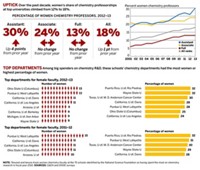Advertisement
Grab your lab coat. Let's get started
Welcome!
Welcome!
Create an account below to get 6 C&EN articles per month, receive newsletters and more - all free.
It seems this is your first time logging in online. Please enter the following information to continue.
As an ACS member you automatically get access to this site. All we need is few more details to create your reading experience.
Not you? Sign in with a different account.
Not you? Sign in with a different account.
ERROR 1
ERROR 1
ERROR 2
ERROR 2
ERROR 2
ERROR 2
ERROR 2
Password and Confirm password must match.
If you have an ACS member number, please enter it here so we can link this account to your membership. (optional)
ERROR 2
ACS values your privacy. By submitting your information, you are gaining access to C&EN and subscribing to our weekly newsletter. We use the information you provide to make your reading experience better, and we will never sell your data to third party members.
I second the suggestion from Emanuel Waddell (C&EN, April 26, page 4) in response to Linda Raber’s article “Women Now 17% of Chemistry Faculty” (C&EN, March 1, page 42). Some departments clearly need more and better incentives to increase the diversity of their faculty, and I suspect the cited article shows just the tip of the iceberg.
Most reports documenting issues contributing to the scarcity of female professors in STEM fields focus on top research institutions, which are considered rough workplaces because of the pressure to publish and obtain external grants. In contrast, small liberal arts colleges are often perceived as more benign and better choices for many female scientists, perhaps because they have traditionally placed less emphasis on publications and grants and because their emphasis on “nurturing” is thought to resonate with women raising families. I would like to see more data comparing the success of women and minority faculty members in STEM fields at major research universities with the success of those at primarily undergraduate institutions (PUIs) because some issues that might primarily affect scientists at smaller colleges are rarely discussed.
William Schulz’s article “A Hostile Workplace” (C&EN, Nov. 16, 2009, page 33) reminded us that relatively low-key, student-centered, or “cozy” environments at PUIs do not necessarily favor diversity when it comes to science faculty. It takes only one or two people in positions of power to make new assistant professors uncomfortable or to sabotage their careers. In the academic culture, senior (tenured) faculty members can usually get away with questionable behavior while mistreated junior professors (without tenure) have little recourse other than time-consuming litigation, unless the institution has faculty representation with political clout.
At top research universities with large numbers of government grants, the need to comply with government rules provides some sense of oversight and an equal-opportunity environment. In addition, the large initial investment (substantial start-up funds and release from teaching) made by major research institutions provides economic incentives for these universities to care about the success of new assistant professors regardless of gender or race. It might be interesting to compare the different types of institutions (big, small, public, private, etc.). Many chemistry departments may need incentives before they commit seriously to changing the status quo and increasing the percentage of women and minority faculty members.
Utha Hellmann-Blumberg
Davis, Calif.




Join the conversation
Contact the reporter
Submit a Letter to the Editor for publication
Engage with us on Twitter